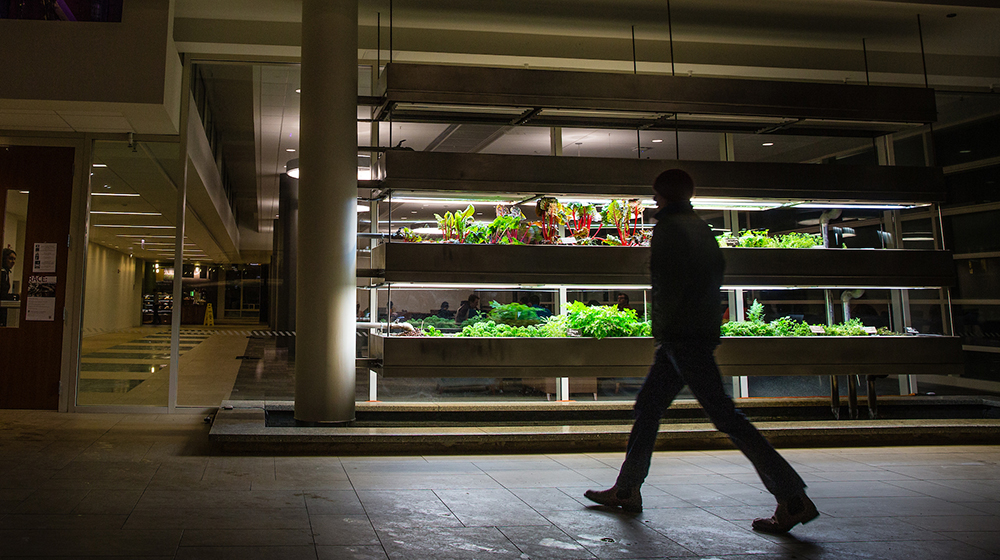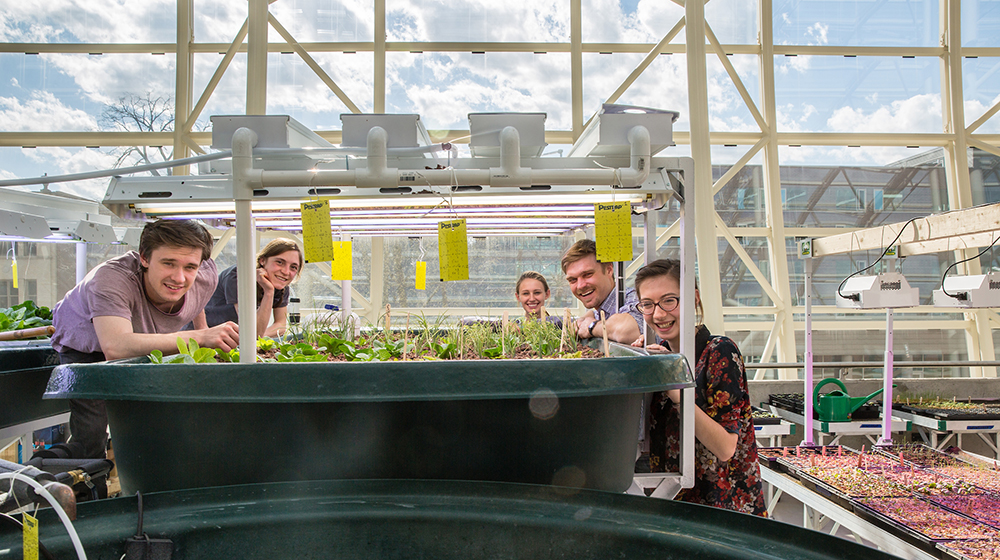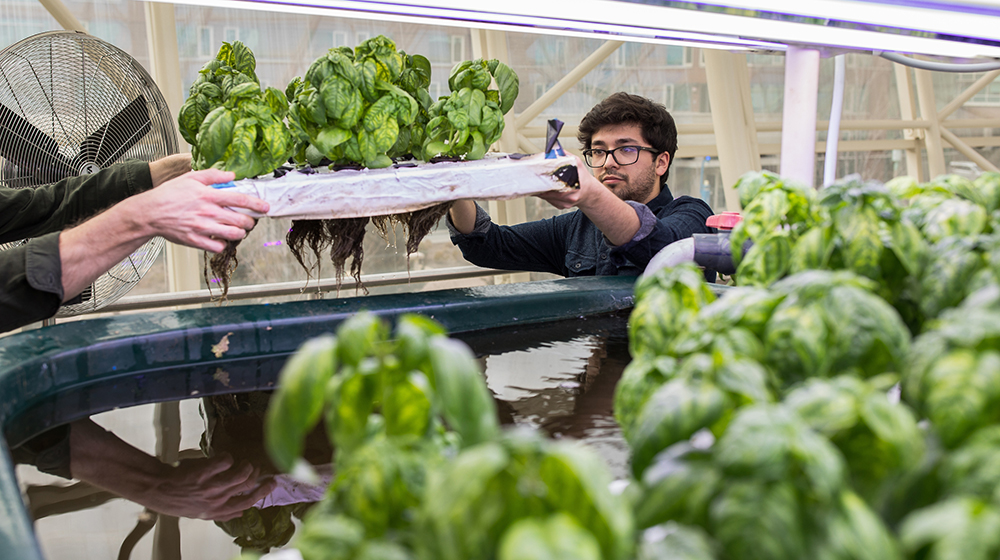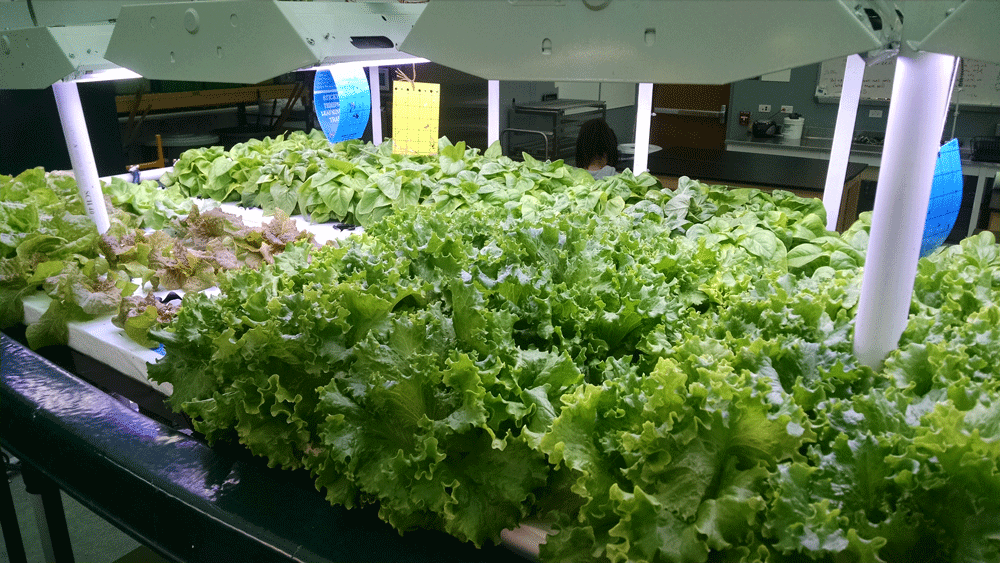Aquaponics
The Ecodome, our 3,100 square-foot greenhouse, is home to two aquaponics systems. Aquaponics is the combination of aquaculture and hydroponic practices (plant culture without soil). Beneficial bacteria colonized within the system convert the toxic components of fish waste into a usable form of plant nutrients.
Aquaponics offers solutions to fish farmers who dispose of nutrient-rich fish waste and to hydroponic growers who require constant inputs of nutrient additives. The systems are located indoors and operate in all seasons, allowing a continual harvest of sustainably grown produce. Aquaponics is a popular technique in urban agriculture as it employs small space intensive growing techniques to provide an abundance of sustainably grown produce in an indoor setting. The Plant and Farmed Here are examples of successful aquaponics business operations in the Chicago area.

SES Lobby System
The lobby system is a three-tiered Media-Filled Bed system. The plants in these tiers are grown in a gravel media containing porous clay that has a neutral pH and allows beneficial bacteria to colonize easily. The plants grown in the lobby system are a diversified mix of annual and perennial edible plants; they are productive year-round and include parsley, sage, basil, thyme, rosemary, mint, nasturtium, swiss chard, onions, and chives. This system is home to koi fish (Cyprinus carpio), which are hardy and can thrive in the fluctuating temperatures of the greenhouse throughout the seasons.
Greenhouse Systems
The greenhouse system features three methods used in aquaponics: media-filled bed, raft system and a nutrient film technique.

Media-Filled Beds
The media-filled bed method uses clay gravel as a medium through which water can flow and drain. Plants are placed directly into the gravel media with rockwool or net pots. Worms live in the gravel media and help mineralize solid fish waste. This method can successfully produce a variety of crop types: root and bulb crops such as onions, leaf crops such as lettuce, and fruiting crops such as tomatoes.

Raft System
The raft system method involves floating trays that allow the roots of the plant to grow while submerged in the nutrient-rich water. Plants are placed in the floating tray in net pots or rockwool. This method is limited to leaf crops such as lettuce and herbs

Nutrient Film Technique
The Nutrient Film Technique is located at the top of the media-filled and raft system beds. This method utilizes sloped trays and drip irrigation to nourish plants placed in net pots or rockwool while minimizing water usage.
The Ecodome, our 3,100 square-foot greenhouse, is home to two aquaponics systems. Aquaponics is the combination of aquaculture and hydroponic practices (plant culture without soil). Beneficial bacteria colonized within the system convert the toxic components of fish waste into a usable form of plant nutrients.
Aquaponics offers solutions to fish farmers who dispose of nutrient-rich fish waste and to hydroponic growers who require constant inputs of nutrient additives. The systems are located indoors and operate in all seasons, allowing a continual harvest of sustainably grown produce. Aquaponics is a popular technique in urban agriculture as it employs small space intensive growing techniques to provide an abundance of sustainably grown produce in an indoor setting. The Plant and Farmed Here are examples of successful aquaponics business operations in the Chicago area.
